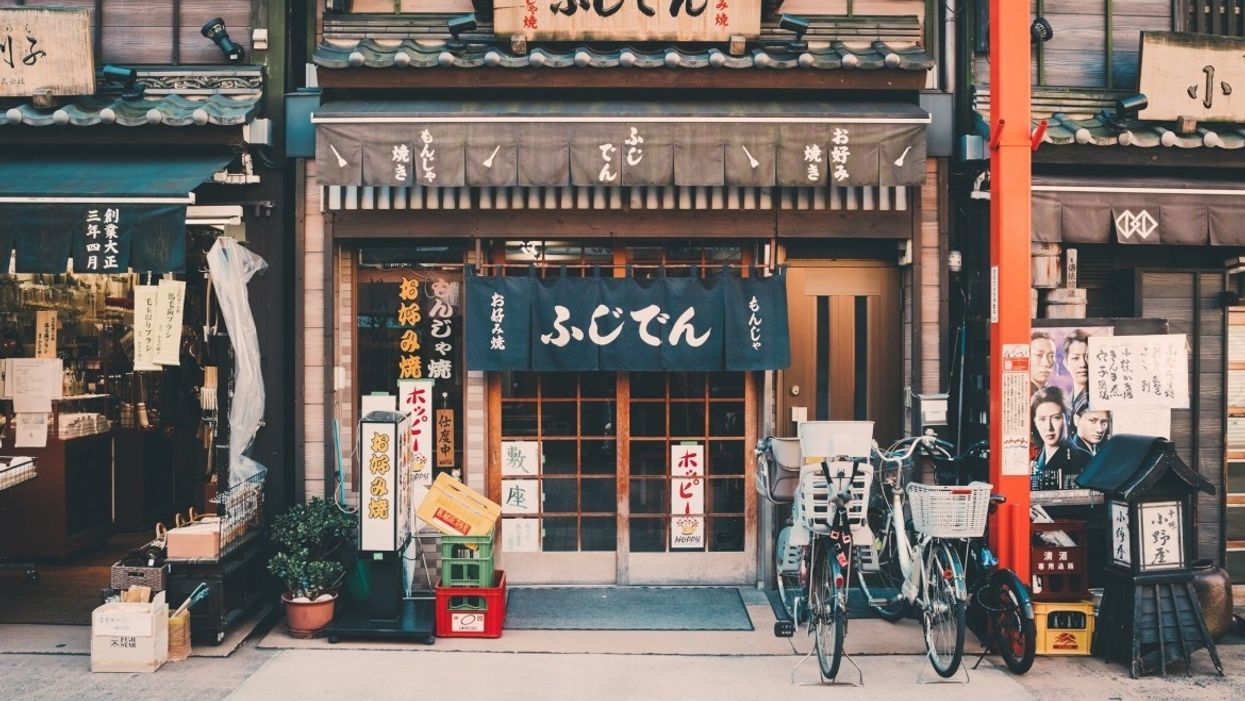Blending the traditional with the ultra modern, cherry blossom groves and Shinto temples, neon-lit skyscrapers and anime amusement parks, Tokyo is the city that invents and reinvents itself.
These days, it seems everyone we know is traveling to Tokyo—and it's no wonder, what with so many Bay Area businesses setting up shop there. When you do visit, here are seven perfect locations for photo opps.
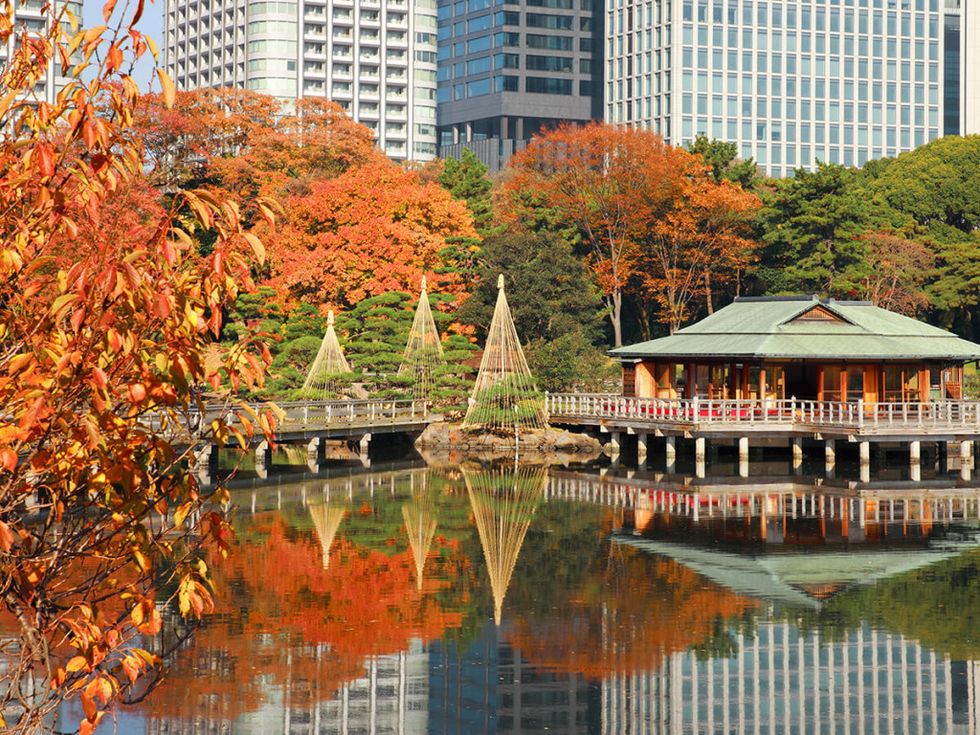
Hama-rikyu Tien
Hama-rikyu Tien (Detached Palace Garden) is a diamond-shaped, nature preserve and public park that's located near the mouth of the Sumida River, which winds through east Tokyo for 16 miles and runs under 26 bridges that were built between the 15th and 20th centuries. Hama-rikyu Tien boasts 300-year-old pines, delicate cherry and plum groves, sprawling peony fields, and freshwater duck ponds. It's also dotted with long wooden footbridges and duck feeding posts resembling miniature burial mounds. Originally a duck hunting ground and villa for Tokugawa Ienobu, the 6th shogun of the Tokugawa dynasty, its original buildings were damaged during the Great Kanto Earthquake of 1923 and then destroyed during WWII. Floating in the middle of Shioiri-no-ike ("Incoming Tide Pond"), Tokyo's only saltwater pond, is Nakajima, a tea house built in the early 18th century that serves bowls of green tea for 500 yen. The garden's left entrance path leads to a river boat landing where visitors can take a 35-minute cruise up the Sumida River to Asakusa for 750 yen.
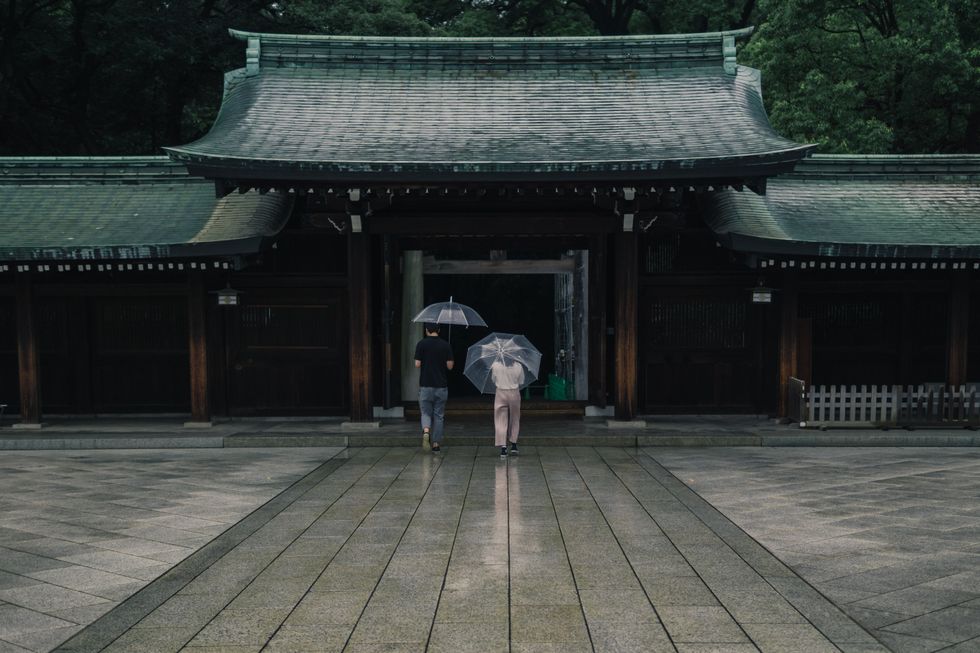
Meiji Jingu
Meiji Jingu is a Shinto shrine built in honor of Emperor Meiji, the first emperor of modern Japan, and his wife Empress Shoken. Originally completed on November 1, 1920—and rebuilt after being demolished during WWII—volunteers from across the entire country donated and planted 10,000 Bhutan pine, white birch, Norway spruce, and European larch. On New Year's Day, three million people flock to Meiji Jingu for hatsumode, the year's first prayers. During the rest of the year, visitors take part in Shinto weddings and activities, such as buying charms or writing out their wishes on ema, small wooden plaques. For 500 yen, visitors can tour the Meiji Jingu Treasure House, the Inner Garden, known for its June irises, or Kiyomasa's Well, a "power spot" dug up in the 17th century.
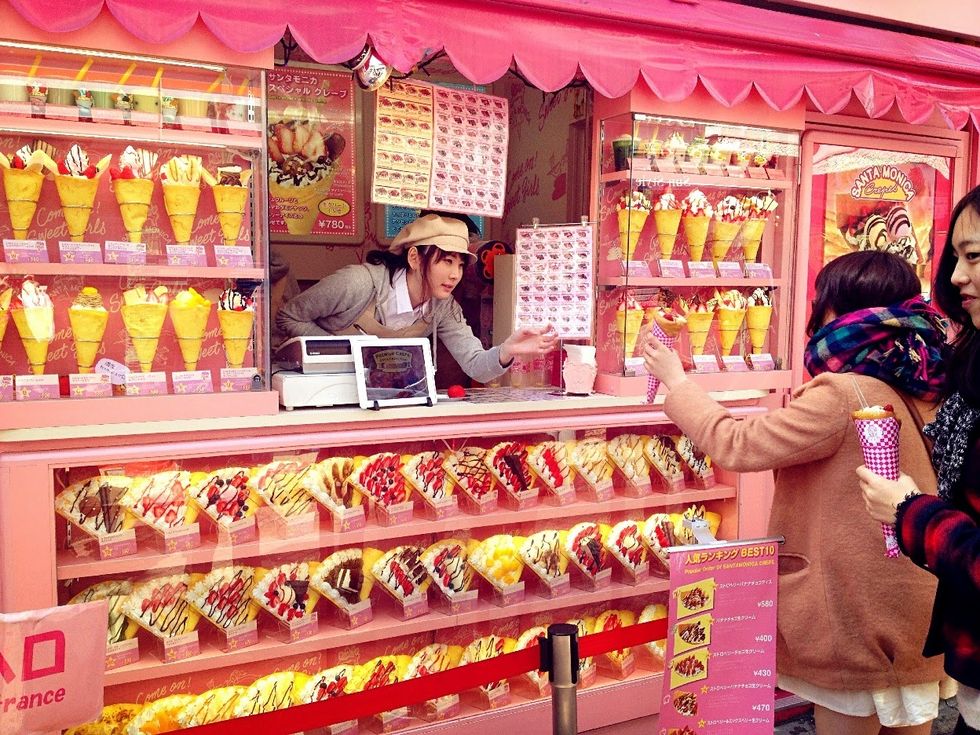
Harajuku
Harajuku is the area around Tokyo's Harajuku Subway Station on the JR Yamanote Line. Scattered with shops, karaoke joints, bars, theaters, and cheap restaurants, Harajuku isn't as sophisticated or clean as Tokyo's other neighborhoods. It's become Japan's center of street fashion. Teenagers—and crowds of onlookers—swarm Takeshita Dori, sometimes referred to as Tokyo's Champs-Elysees, dressing as western icons and anime characters: donning colorful wigs, mile-long eyelashes, doll-like dresses, and giant stuffed animals. The area inspired Gwen Stefani's to write the hit song "Harajuku Girls" and launch her "Harajuku Lovers" fashion line in '05.
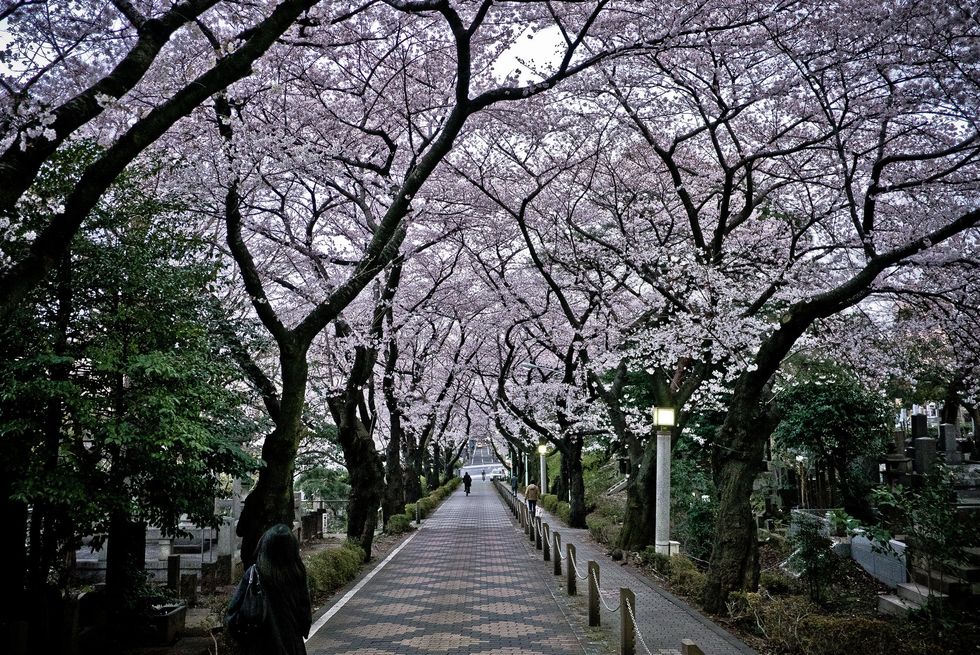
Aoyama Cemetery
Aoyama Cemetery, established in 1872 when Japan reopened itself to the world, is managed by the Tokyo Metropolitan Government. It's covered in kaji-inscribed monoliths, mound-shaped crypts, Buddhist and Shinto shrine gates, realistic busts, and Christian crosses. Every spring, cherry blossom trees branch out over the graveyard's pathways creating flower tunnels, and Hanami or "flower viewing" parties, with DJs and lavish picnic baskets, pop up. In the summer, the cherry blossoms eventually fall and carpet the floor, which can dangerously drop several feet. Located on the world's most expensive piece of land, Aoyama Cemetery is the final resting place of many Meiji-Era Westerners, as well as, Tokyo's oldest families—and their pets—celebrities, and important historical figures, such as General Nogi Maresuke and Okubo Toshimichi.
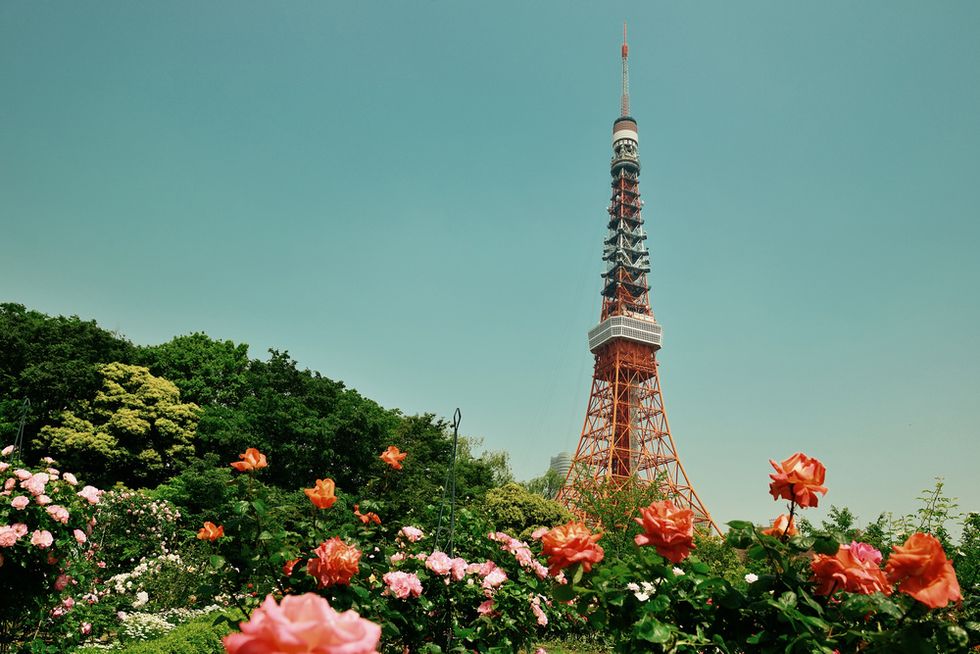
Tokyo Tower
After the devastation of WWII, Tokyo's fledgling TV network needed a tall antenna to transmit a variety of signals, and its people were hungry for a landmark to fill its empty skyline. The result was a 1,093-foot-high self-supported steel tower, 39 feet taller than the Eiffel Tower. Weighing only 4,000 tons, 3.2 million visitors drop-in each year. The tower's main observatory costs 900 yen and can be reached via elevator or a 600-step staircase. At only 450 feet, its look-down glass windows provide exquisite views of Japan's bustling capital. From the special observation deck, costing 1600 yen and an additional 330 feet up, visitors can glimpse Mount Fuji and Tokyo Sky Tree, a 2080-foot-tall skyscraper. Directly below Tokyo Tower is "One-Piece Tower." Based on the popular pirate adventure manga written by Eiichiro Oda, the amusement park hosts live action shows, character birthday parties, and souvenir shops.
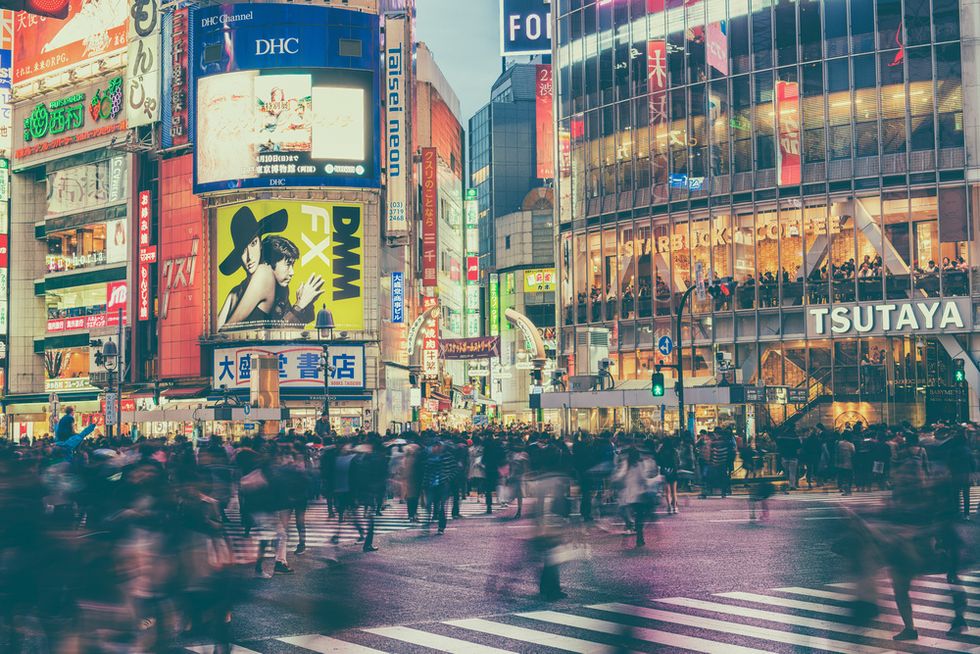
Shibuya Crossing
Rumored to be the world's busiest pedestrian crossing, Shibuya Crossing, "The Scramble," is most impressive on Friday and Saturday nights, when shoppers, students, young couples, and commuters, dressed in their finest amid neon signs, spill into the intersection from five directions like marbles in a box. Rainy days also make for an impressive sight as thousands converge together carrying giant, multi-colored umbrellas. Appearing in major motion pictures, sitcoms, music videos, and advertisements, it's an area subject to wild stunts, illegal concerts, gorilla advertising, and celebrity run-ins. Visitors can easily observe this moment of organized chaos from a second-story window of Starbucks, located in the Tsutaya building, while indulging in a green tea frappuccino topped with adzuki beans and whipped cream.
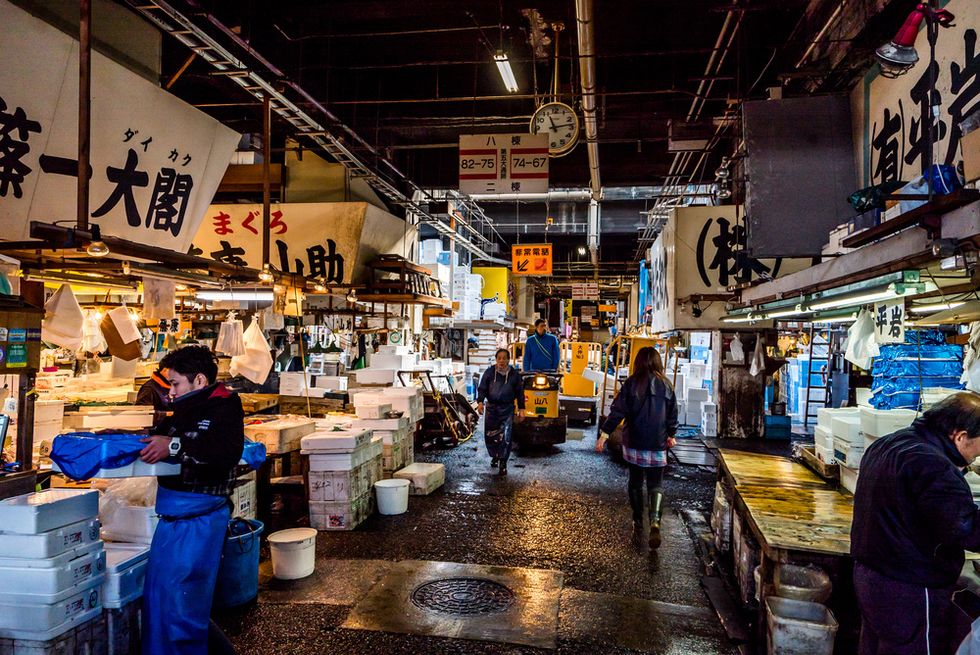
Tsukiji Fish Market
Tsukiji Fish Market is the world's biggest and busiest wholesale fish market occupying the site of Japan's first naval academy. Handling 6 billion yen per year and employing 60,000 people, it's located on 54 acres of reclaimed land. It houses 1,200 vendors, supplying the 2,000 metric tons of seafood consumed in Tokyo each day. Its tuna auctions, open from mid-January to early-December, are limited to just a 120 visitors per day. They're first-come, first serve, so long, winding lines form in front of the Osakana Fukyu Center before 5 am. Admission is free, and the market is closed on Sundays, national holidays, and some Wednesdays.
This post was originally published on Rogue Habits.



